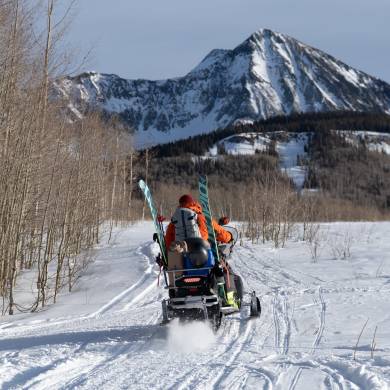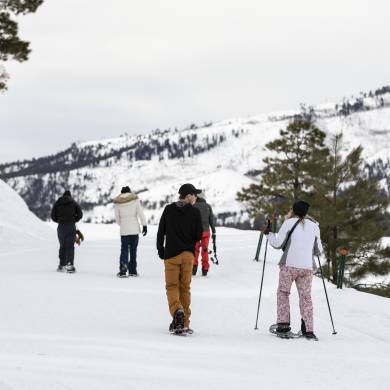Finding the best way to keep safe, respect the national forest, and have an epic time is easy with proper preparation. Given the fantastic snow conditions we’ve seen in the San Juans this winter, it’s no wonder skiers are flocking to the backcountry for a killer time.
But venturing beyond the safety, rules, and regulations of the local ski resort poses its own set of challenges. It requires extensive training, physical ability, and backcountry skills.
Know before you go, follow the skier’s bible and ensure you share all of the characteristics of a sustainable backcountry adventurer!
The sustainable backcountry tourer will:
1. Be an expert skier with avalanche training and strong risk-assessment skills
Backcountry touring poses a number of challenges you won’t find at Purgatory Resort. If you plan to tour beyond the groomed trails, it’s necessary to have both avalanche safety certification and emergency skills. Plan to be fit as a fiddle to handle the often rugged and unpredictable conditions, even if that means beginning a fitness regime six months in advance of your planned expedition. If it’s been awhile since your last outing, consider attending a refresher course or local workshop. Durango’s local gear shop, Backcountry Experience, hosts a number of events in this realm. The Silverton Avalanche School is a great source of information, too!
2. Plan ahead and acquire the necessary permits
Like with all backcountry expedition, proper preparation is key to success. Double and triple check that you have all the necessary gear packed. Secure the necessary maps and navigation tools you’ll need and let someone know of your itinerary ahead of time. Acquire the necessary permits for where you plan to roam and use your local forest ranger for advice and recommendations. In your itinerary (which you should write out so that there is a physical copy), you should include things like how many people are in your party, how long you plan to stay in the backcountry, and where you expect to be at any given time. Likewise, know who to contact if things go awry and always be prepared for a worst-case scenario.
3. Follow the designated trail system
With 10 feet of snow covering the trail, you may assume following the map route isn’t necessary. However, designated trail systems are especially important to follow in the wintertime. These trails take into consideration wildlife habitats and ensure you won’t be pestering any hibernating creatures. If you’re camping overnight, establish ahead of time where this will be. If you’re following the San Juan Hut System, this will mean staying at a different alpine hut every evening. Acquire all the necessary information beforehand and abide by the trail rules.
4. Pack it all out
Leaving no trace means making sure that everything you bring to the backcountry makes its way out. Trash, food, waste, and even organic material like banana peels and apple cores should be contained in your pack. If your four-legged companion tags along, that means packing up all the waste they produce too. The San Juan Hut System provides composting toilets at many locations along the trail, meaning they have their own set of rules regarding human waste. As we all work to maintain this pristine wilderness, it helps to pick up any trash you find along the way, regardless of where it came from.
5. Respect the wildlife
While most ambling creatures hibernate for the winter or migrate to lower elevations, don’t be surprised if you run into wildlife like moose, mountain goats, hares, elk, or deer. Keep a far distance, respect their space, and pay attention to their behaviors.
6. Focuse on self-care
The ability to listen to our body and provide it what it wants becomes even more important the moment we enter the backcountry. Staying well-fed, warm, dry, and hydrated are all key components to staying sharp and focused. Consider well in advance what it will require to nourish your body. Pack clothing layers, carry more than enough calories, eat frequently, and sip water!
If you’re traveling the San Juan Hut System or spending the night in the backcountry, remember to collect fresh snow the night before you sleep so that it can melt into drinkable water by morning. It takes ten inches of snow to produce one inch of water, so it’s important to be proactive at camp, no matter how exhausted you may feel.
7. Always have an epic time!
Through proper planning and exercising of Leave no Trace principles, the sustainable backcountry tourer ensures that these activities can be celebrated for generations to come. The more prepared and educated you are, the less likely you are to run into trouble. Stay safe, smart, and have a fantastic time!




